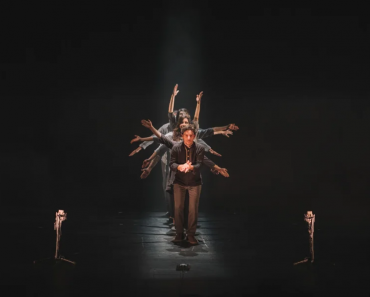The Hellenic Lyceum of Sydney transported audiences on a captivating journey through 1,000 years of Byzantine history with the world premiere of their groundbreaking production, “Women of Byzantium”, on Sunday, November 24th, 2024, at the Hermes Lounge in Kogarah Sydney, Australia. This innovative performance blended theatrical storytelling, audio-visual elements, music, and dance to illuminate the lives and legacies of nine remarkable women who shaped the Byzantine Empire.
The Byzantine Empire, also known as the Eastern Roman Empire, flourished for over a millennium, from approximately 330 AD to 1453 AD. A direct continuation of the Roman Empire in its eastern provinces, Byzantium stood as a beacon of civilization during the Middle Ages, preserving and transmitting classical knowledge while forging its unique cultural identity. Its capital, Constantinople (modern-day Istanbul), was a vibrant hub of trade, learning, and artistic expression, bridging the East and West. The empire’s influence extended across vast territories, encompassing parts of modern-day Greece, Turkey, the Balkans, North Africa, and the Middle East. The Byzantine era witnessed significant historical events, including the rise of Christianity, the Iconoclastic Controversy, the Crusades, and the eventual conquest of Constantinople by the Ottoman Empire.

The Hellenic Lyceum of Sydney, a prominent organization that promotes Hellenic culture and heritage, conceived and presented this ambitious project as part of Australia’s centennial celebrations of the Greek Orthodox Archdiocese. The Lyceum collaborated with the Archdiocese and UNSW, with the performance being held under the auspices of the General Secretary for Greeks Living Abroad of the Hellenic Republic. This collaboration reflects the Lyceum’s commitment to fostering intellectual and artistic dialogue within the Greek-Australian community and beyond.
“Women of Byzantium” employed a unique narrative device. It featured a time-travelling journalist, Theodora Zourkas, who conducted insightful interviews with nine influential women from various periods of Byzantine history. This ingenious framing allowed the audience to gain intimate glimpses into the lives of these extraordinary figures.

The performance showcased the brilliance of Hypatia (Nia Gittas), a philosopher and mathematician who symbolized the clash between the Greco-Roman world and the nascent Christian faith. It explored the accomplishments of Empress Evdokia (Antonia Nikolopoulou), a pivotal figure in establishing the first university in Europe. The audience learned of the formidable Empress Pulcheria (Anna Micos), who wielded considerable power and significantly guided ecumenical councils. The iconic Empress Theodora (Sophie Brunetta), known for her courage and political acumen, was brought to life, recounting her role in saving Justinian’s throne and her contribution to the rebuilding of the Hagia Sophia.
The production also delved into the lives of women of deep faith and artistic talent. It featured Saint Kassiani (Stephanie Giannas), a renowned hymnographer whose liturgical music resonates within the Orthodox Church. The complex characters of Empresses Irene (Vivian Spanos) and Theophano (Maritsa Micos) were examined, showcasing their ambition and the often ruthless means they employed to maintain their power. The play also explored the unconventional life of Empress Zoi (Linda Legas), who, after age fifty, embarked on three marriages and transformed the imperial palace into a veritable chemical laboratory. Finally, the audience was introduced to Anna Comnena (Hellen Demas), the world’s first female historian, whose invaluable chronicle, the Alexiad, provides crucial insights into the First Crusade.

Following the theatrical performance, a lively discussion unfolded, delving into controversial topics of the Byzantine era, including iconoclasm and the tragic murder of Hypatia. Dr. Vasilis Adrahtas, Convenor of Greek Studies at UNSW, moderated the discussion, assisted by John Theodore. Speeches by Liana Vertzayias, President of the Hellenic Lyceum, His Grace Bishop Christodoulos, and Anastasia Christofilopoulou, head of diplomacy at the Greek Consulate, further enriched the event.
Beyond the historical narrative, the production featured a vibrant display of traditional dances from Asia Minor, choreographed by Irene Tsenkas and Vas Aligiannis. The costumes, rarely seen in contemporary performances, added another layer of authenticity and visual splendour to the event.

The resounding success of “Women of Byzantium” is a testament to the dedication and talent of the entire team, both on and off stage. From the script, penned by Costa Vertzayias, to the direction by Liana Vertzayias, the performance captivated the audience with its innovative approach to historical storytelling. The commitment of the cast, including Antonia Nikolopoulou, Anna Micos, Sophie Brunetta, Stephanie Giannis, Vivian Spanos, Stella Sorotou, Maritsa Micos Dragonas, Hellen Sparta, Linda A Legas, Christina Tsaconas, Irene Rinaki Tss, and Angela Konstantinopoulou, brought these historical figures to life with depth and nuance. The collaborative effort of all involved ensured a truly memorable and thought-provoking experience. Calls for repeat performances highlight the production’s impact and the enduring fascination with the women who shaped the Byzantine world.
Photos of the afternoon’s event



























































































Video from Syndesmos Connecting People and Their Stories of the Performance
All images Copyright Nick Bourdaniotis for Greek City Times







